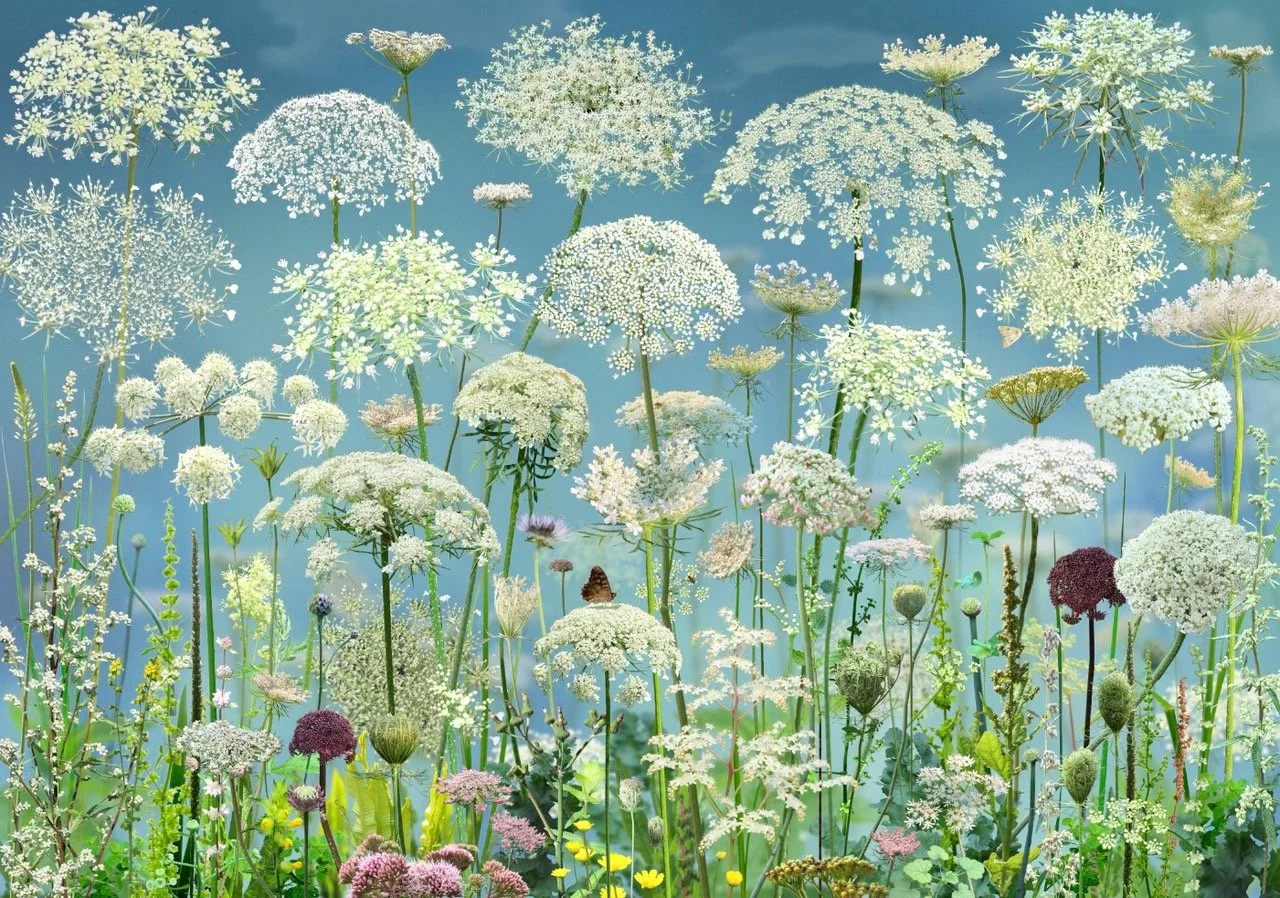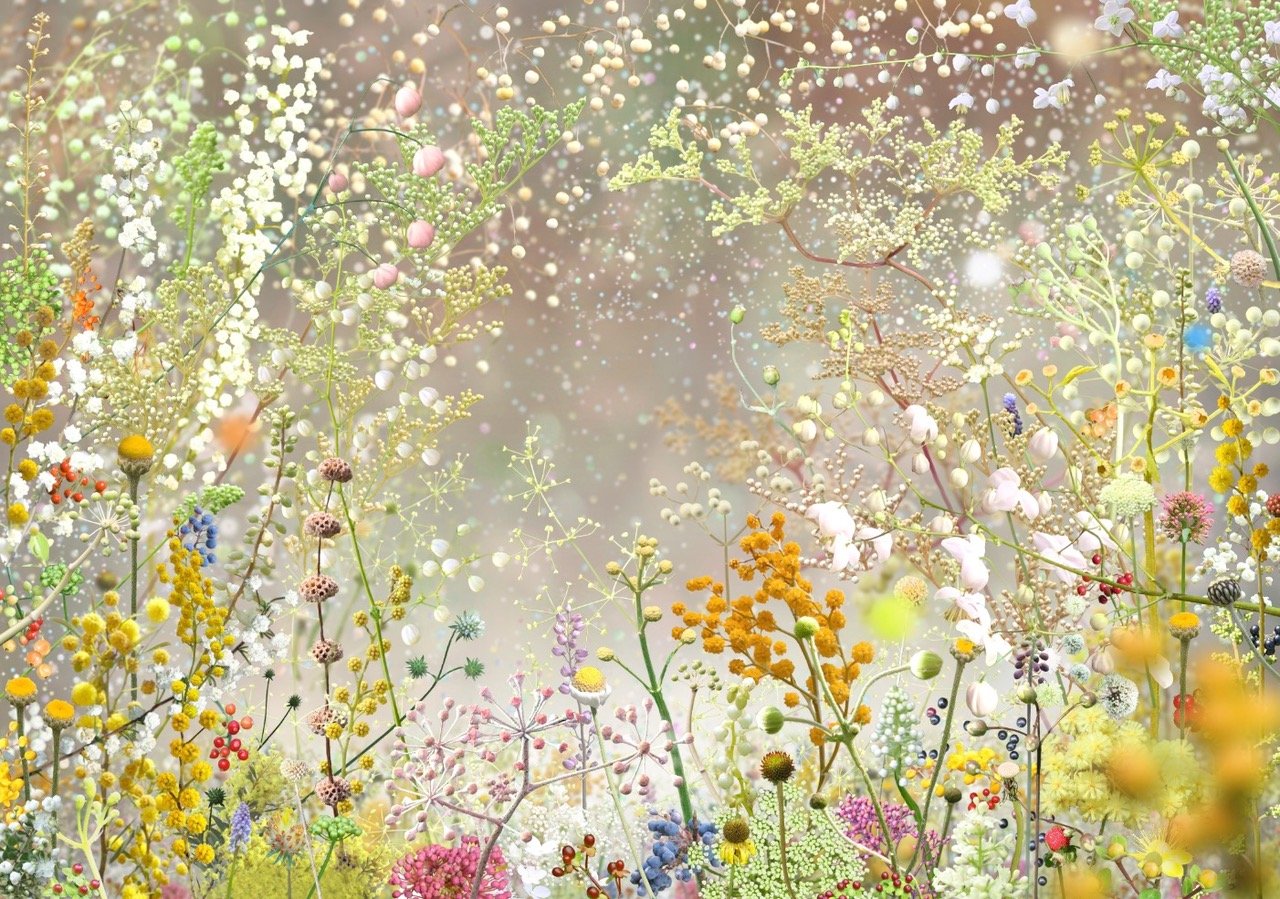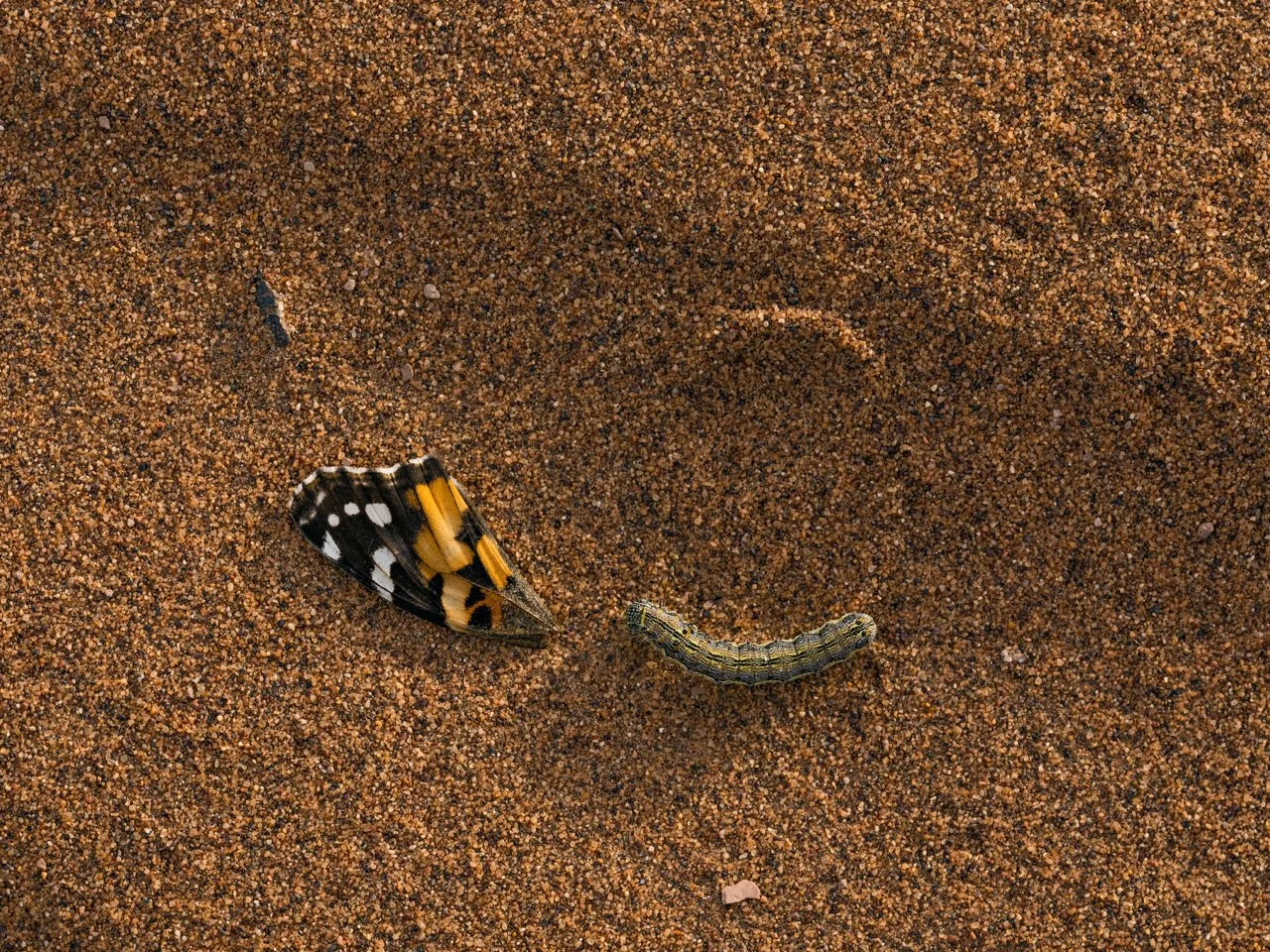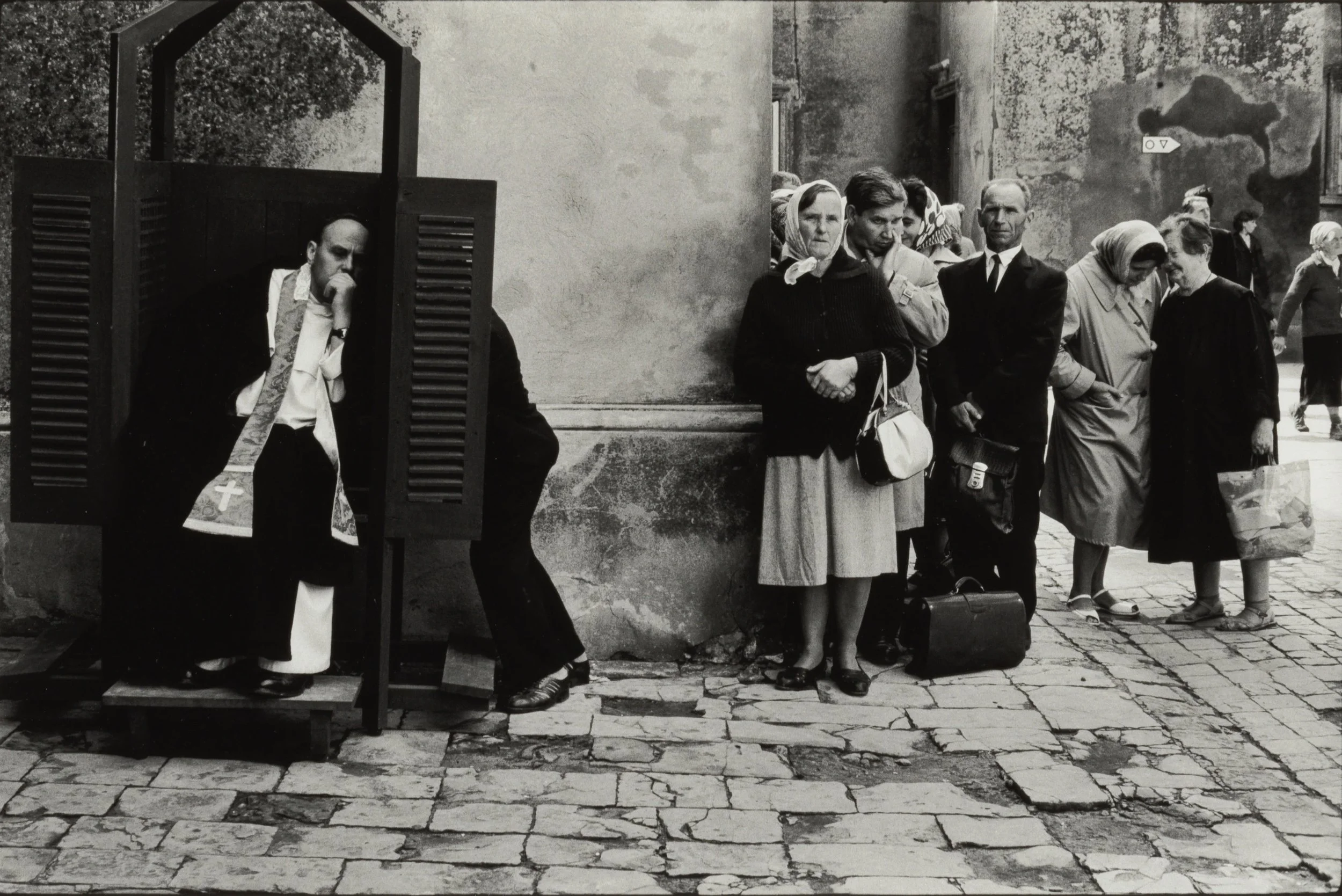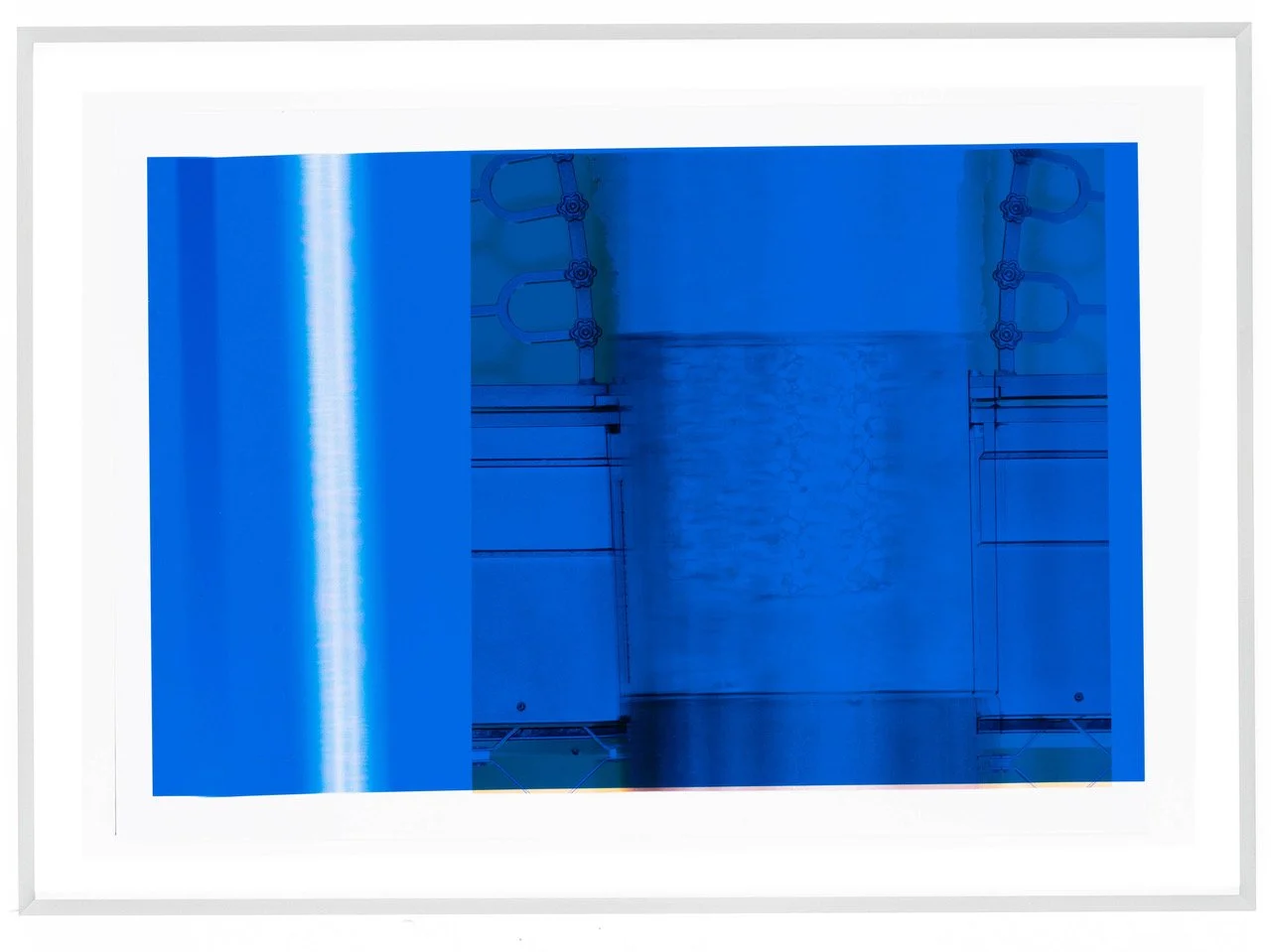
Merci Maman. Straßenfotografie in Mali | Museum fünf Kontinente | München
Museum fünf Kontinente | München
16. Mai – 16. November 2025
Merci Maman. Straßenfotografie in Mali
Auf dem Sotrama-Kleinbus-Bahnhof in Bamako, Mali, 2024, Fotografie © Sidiki Haidara
Mittels zeitgenössischer Straßenfotografie lädt Merci Maman ein, in die farbenfrohe Welt der Sotramas von Bamako einzutauchen. Wie kein anderes Verkehrsmittel prägen die bunt bemalten Kleinbusse die pulsierende Hauptstadt von Mali in Westafrika. Benannt nach der Societé du Transport Mali, verkörpern sie ein faszinierendes kulturelles Phänomen.
Von Busmalern kunstvoll gestaltet, ist jeder Sotrama ein Unikat und erzählt seine eigene Geschichte. Bemalungen in satten Farben spiegeln aktuelle Trends und Haltungen in Mali. Porträts von Musikern, Politikern und religiösen Führern zieren die Fahrzeuge ebenso wie Symbole und Logos aus Pop, Politik, Sport und Religion. Auch Lebensweisheiten und Danksagungen (Merci Maman) sind auf den Karosserien zu finden.
Die Sotramas bilden eine Art rollende Kunstausstellung und Straßentheater und fungieren als Barometer für die gesellschaftliche Stimmung vor Ort. Sie sind aber auch ein Ort der Begegnung, an dem Menschen miteinander ins Gespräch kommen und sich solidarisieren.
Im Mittelpunkt von Merci Maman stehen circa sechzig eigens für die Ausstellung angefertigte Fotografien von Seydou Camara, Monique Dena, Abdoul Karim Diallo, Sidiki Haidara und Anna N’Diaye. Als Mitglieder des malischen Foto-Kollektivs Yamarou setzen sie sich seit Jahren mit dieser einzigartigen Kunstform auf Rädern auseinander. Ihre Arbeiten zeigen aber nicht nur die bemalten Busse im Stadtverkehr, sondern auch deren Fahrer und Fahrgäste.
Ziel des von Seydou Camara gegründeten Kollektivs Yamarou ist es, die Fotografie direkt in die Gemeinschaft zu tragen. Die Yamaristen begreifen sich als Verteidiger des gesellschaftlichen Zusammenhalts. Ihr Fokus liegt auf der Würde der Abgebildeten und der Darstellung einer unverfälschten Lebenswirklichkeit. Junge Menschen werden von ihnen ermutigt, ihre Umgebung bewusst wahrzunehmen und durch Fotografie zu kommunizieren.
Mit der Ausstellung will das Museum Fünf Kontinente die Vision des malischen Foto-Kollektivs mittragen, ein differenziertes Bild des westafrikanischen Landes zu vermitteln – gesehen durch die Linse seiner eigenen Bevölkerung.
Merci Maman wurde in enger Zusammenarbeit mit dem Künstler und Journalisten Jonathan Fischer realisiert, der in München und Mali lebt.
Straßenszene mit bemalten Sotrama-Kleinbussen, Bamako, Mali, 2024, Fotografie © Abdoul Karim Diallo
À travers des photographies contemporaines prises dans la rue, Merci Maman vous invite à plonger dans l'univers coloré des Sotramas de Bamako. Ces minibus peints de couleurs vives marquent comme aucun autre moyen de transport la capitale animée du Mali, en Afrique de l'Ouest. Nommés d'après la Société du Transport Mali, ils incarnent un phénomène culturel fascinant.
Conçus avec art par des peintres de bus, chaque sotrama est unique et raconte sa propre histoire. Les peintures aux couleurs vives reflètent les tendances et les attitudes actuelles au Mali. Des portraits de musiciens, d'hommes politiques et de chefs religieux ornent les véhicules, tout comme des symboles et des logos issus de la culture pop, de la politique, du sport et de la religion. On trouve également des maximes et des remerciements (Merci Maman) sur les carrosseries.
Les sotramas constituent une sorte d'exposition d'art roulante et de théâtre de rue et font office de baromètre de l'humeur sociale locale. Mais ils sont également un lieu de rencontre où les gens peuvent discuter et se solidariser.
Au cœur de Merci Maman, on trouve une soixantaine de photographies réalisées spécialement pour l'exposition par Seydou Camara, Monique Dena, Abdoul Karim Diallo, Sidiki Haidara et Anna N'Diaye. Membres du collectif de photographes maliens Yamarou, ils s'intéressent depuis des années à cette forme d'art unique sur roues. Leurs travaux ne montrent pas seulement les bus peints dans la circulation urbaine, mais aussi leurs conducteurs et leurs passagers.
L'objectif du collectif Yamarou, fondé par Seydou Camara, est d'amener la photographie directement dans la communauté. Les Yamaristes se considèrent comme des défenseurs de la cohésion sociale. Ils mettent l'accent sur la dignité des personnes photographiées et sur la représentation d'une réalité authentique. Ils encouragent les jeunes à prendre conscience de leur environnement et à communiquer à travers la photographie.
Avec cette exposition, le Musée des Cinq Continents souhaite soutenir la vision du collectif de photographes maliens et transmettre une image nuancée de ce pays d'Afrique de l'Ouest, vu à travers l'objectif de sa propre population.
Merci Maman a été réalisée en étroite collaboration avec l'artiste et journaliste Jonathan Fischer, qui vit à Munich et au Mali.
Straßenszene mit bemaltem Sotrama-Kleinbus, Bamako, Mali, 2024, Fotografie © Abdoul Karim Diallo
Attraverso la fotografia di strada contemporanea, Merci Maman invita a immergersi nel colorato mondo dei sotrama di Bamako. Come nessun altro mezzo di trasporto, questi minibus dipinti a colori vivaci caratterizzano la vivace capitale del Mali, nell'Africa occidentale. Prendono il nome dalla Societé du Transport Mali e incarnano un affascinante fenomeno culturale.
Realizzati con grande maestria da pittori di autobus, ogni sotrama è unico e racconta la propria storia. Le pitture dai colori vivaci riflettono le tendenze e gli atteggiamenti attuali in Mali. Ritratti di musicisti, politici e leader religiosi adornano i veicoli insieme a simboli e loghi della cultura pop, della politica, dello sport e della religione. Sulle carrozzerie si trovano anche massime di saggezza e ringraziamenti (Merci Maman).
I sotrama costituiscono una sorta di mostra d'arte itinerante e teatro di strada e fungono da barometro dell'umore sociale locale. Sono anche un luogo di incontro dove le persone possono conversare e stringere legami di solidarietà.
Al centro di Merci Maman ci sono circa sessanta fotografie realizzate appositamente per la mostra da Seydou Camara, Monique Dena, Abdoul Karim Diallo, Sidiki Haidara e Anna N'Diaye. Come membri del collettivo fotografico maliano Yamarou, da anni si occupano di questa forma d'arte unica su ruote. I loro lavori non mostrano solo gli autobus dipinti nel traffico cittadino, ma anche i loro autisti e passeggeri.
L'obiettivo del collettivo Yamarou, fondato da Seydou Camara, è quello di portare la fotografia direttamente nella comunità. Gli yamaristi si considerano difensori della coesione sociale. Il loro focus è sulla dignità delle persone ritratte e sulla rappresentazione di una realtà di vita autentica. Incoraggiano i giovani a osservare consapevolmente l'ambiente che li circonda e a comunicare attraverso la fotografia.
Con questa mostra, il Museo dei Cinque Continenti intende sostenere la visione del collettivo fotografico maliano, trasmettendo un'immagine differenziata del Paese dell'Africa occidentale, vista attraverso l'obiettivo della sua stessa popolazione.
Merci Maman è stato realizzato in stretta collaborazione con l'artista e giornalista Jonathan Fischer, che vive a Monaco di Baviera e in Mali.
Die globale Ikone Che Guevara als Bemalung auf einem Sotrama in Bamako, Mali, 2024, Fotografie © Monique Dena
Using contemporary street photography, Merci Maman invites you to immerse yourself in the colourful world of the sotramas of Bamako. Like no other means of transport, the brightly painted minibuses are a dominant feature of the vibrant capital of Mali in West Africa. Named after the Societé du Transport Mali, they are the symbol of a fascinating cultural phenomenon.
Artistically created by bus painters, every sotrama bus is one of a kind and tells its own story. Paintings in rich colours reflect current trends and attitudes in Mali. Portraits of musicians, politicians and religious leaders as well as symbols and logos from the worlds of pop music, politics, sport and religion decorate the vehicles. And maxims and expressions of thanks (Merci Maman) are also on display.
The sotramas are a form of mobile art exhibition and street theatre and function as a barometer of the local mood. But they are also a place that enables people to meet and get talking and engenders a spirit of solidarity.
Merci Maman is based on around sixty photographs specially created for it by Seydou Camara, Monique Dena, Abdoul Karim Diallo, Sidiki Haidara and Anna N’Diaye. As members of the Yamarou Collective, they have been exploring this unique form of art on wheels for years. Their works however show not only the painted buses on the town’s roads but also their drivers and passengers.
The goal of the Yamarou collective founded by Seydou Camara is to take photography directly into the community. The Yamarists see themselves as defenders of social cohesiveness. They focus on the dignity of those portrayed and depiction of the stark realities of everyday life. Young people are encouraged by them to take conscious note of their surroundings and communicate this through photography.
With the exhibition the Museum Fünf Kontinente is endeavouring to support the Malian photography collective’s vision of communicating a differentiated picture of the West African country – as seen through the lens of its own population.
Merci Maman was put together in close cooperation with the artist and journalist Jonathan Fischer, who lives in Munich and Mali.
(Text: Museum fünf Kontinente, München)






















































